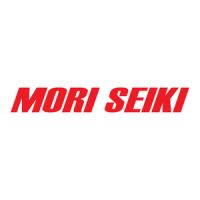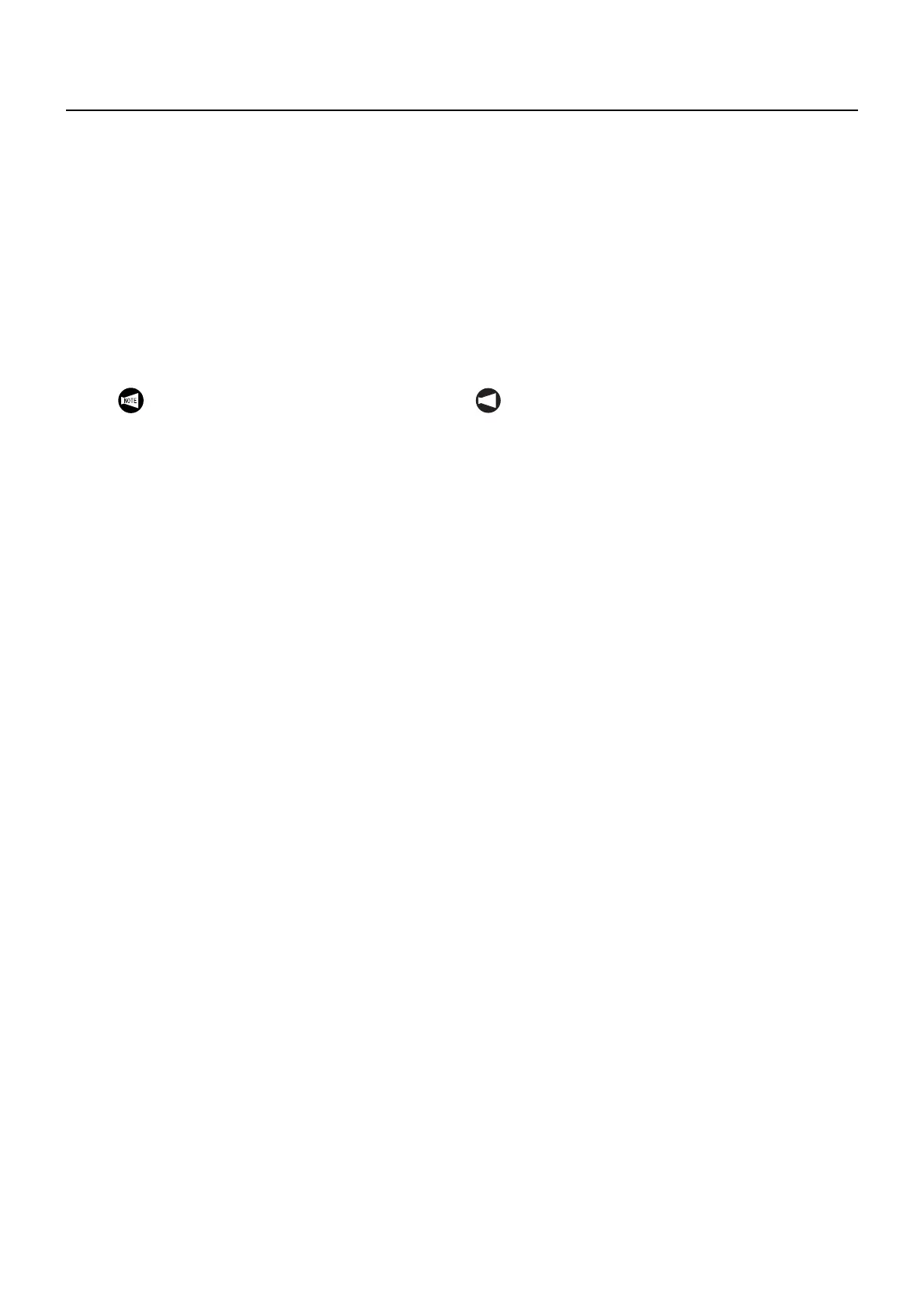2-365MACHINE OPERATIONS OPERACIONES DE MECANIZADO
• W . . . . . . . . . . . Specifies the distance and direction from
the cutting start point to the cutting end
point in the Z-axis direction.
Especifica la distancia y la dirección desde el
punto inicial de corte hasta el punto final de corte
en la dirección del eje Z.
• P, I . . . . . . . . . . Specifies the X-axis travel amount (un-
coded, radius designation). (G74)
Specifies the depth of cut in the X-axis
direction (un-coded, radius designation).
(G75)
Especifica la cantidad de desplazamiento del eje
X (no codificado, designación del radio). (G74)
Especifica la profundidad del corte en la
dirección del eje X (no codificado, designación
del radio). (G75)
• Q, K . . . . . . . . . Specifies the depth of cut in the Z-axis
direction (un-coded). (G74)
Specifies the Z-axis travel amount (un-
coded). (G75)
Especifica la profundidad del corte en la
dirección del eje Z (no codificado). (G74)
Especifica la cantidad de desplazamiento del eje
Z (no codificado). (G75)
• R(2), D. . . . . . . Escape at the bottom Alejamiento en el fondo
• F . . . . . . . . . . . Specifies the feedrate in ordinary control Especifica la velocidad de avance en un mando
ordinario
1. If no F command is specified in the G74/
G75 block, the command valid before exe-
cution of the G74/G75 block becomes
valid for execution of the cutting defined
by commands in the G74/G75.
2. The cycle starts from and ends at the point
where the cutting tool is positioned imme-
diately prior to the execution of the G74/
G75 block.
3. For the G71, G72, or G73 cycle, the auto-
matic tool nose radius offset function is
invalid.
4. When specifying the escape at the bottom
of cut using address R(2), escape move-
ment occurs from the first bottom of cut if
an un-coded value is used. If a minus sign
is used, escape movement occurs from
the second bottom but there is no escape
at the first bottom. When performing
grooving on an end face, assign a minus
sign for address R(2). If a minus sign is
not specified, the tool shifts by R(2) at the
bottom of cut causing breakage of the tool.
Note that the direction of escape at the
bottom of cut is the same disregarding of
the use of the minus sign.
5. The following restrictions apply if a G74/
G75 command is specified. An alarm
message (P204) is displayed unless these
restrictions are observed.
• Specify a value other than "0" for
address P/Q if address X(U)/Z(W) is
specified.
• The axis movement distance
specified by address X(U)/Z(W) must
be greater than the axis movement
distance specified by address P/Q.
• The axis movement distance
specified by address P/Q must be
greater than the amount of escape
specified by address R(2).
• The depth of cut, in each cutting
movement, specified by address P/Q
must be greater than the amount of
relief specified by address R(1).
• The depth of cut, in each cutting
movement, specified by address P/Q
must be smaller than the total depth
of cut.
NOT A
1. Si no se especifica ninguna instrucción F en el
bloque G74/G75, la instrucción válida tras la eje-
cución del bloque G74/G75 se validará para eje-
cutar el corte definido por las instrucciones en
G74/G75.
2. El ciclo comienza desde y finaliza en el punto en
el que la herramienta de corte se sitúa inmediata-
mente antes de la ejecución del bloque G74/G75.
3. Para el ciclo G71, G72 o G73, la función de
corrección automática del radio de la nariz de la
herramienta será inválida.
4. Al especificar el alejamiento en el fondo del corte
usando la dirección R(2), se produce un movi-
miento de alejamiento desde el primer fondo del
corte si se utiliza un valor no codificado. Si se uti-
liza un signo negativo, se produce un movimiento
de alejamiento desde el segundo fondo, si bien
esto no ocurre en el primer fondo. Al realizar el
ranurado en una cara externa, atribuya un signo
negativo para la dirección R(2). Si no se especi-
fica un signo negativo, la herramienta se des-
plaza de R(2) en el fondo del corte provocando la
rotura de la herramienta. Tenga en cuenta que la
dirección de alejamiento en el fondo del corte es
la misma independientemente del uso del signo
negativo.
5. Las siguientes restricciones se aplican si se
especifica una instrucción G74/G75. Se visuali-
zará un mensaje de alarma (P204) a no ser que
se respeten estas restricciones.
• Especifique un valor distinto a "0" para la
dirección P/Q si se especifica la dirección
X(U)/Z(W).
• La distancia de movimiento del eje
especificada por la dirección X(U)/Z(W)
deberá ser mayor que la distancia de
movimiento del eje especificada por la
dirección P/Q.
• La distancia de movimiento del eje
especificada por la dirección P/Q deberá ser
mayor que la cantidad de alejamiento
especificada por la dirección R(2).
• La profundidad de corte, en cada
movimiento de corte, especificada por la
dirección P/Q deberá ser mayor que la
cantidad de liberación especificada por la
dirección R(1).
• La profundidad de corte, en cada
movimiento de corte especificada por la
dirección P/Q, deberá ser menor que la
profundidad total del corte.

